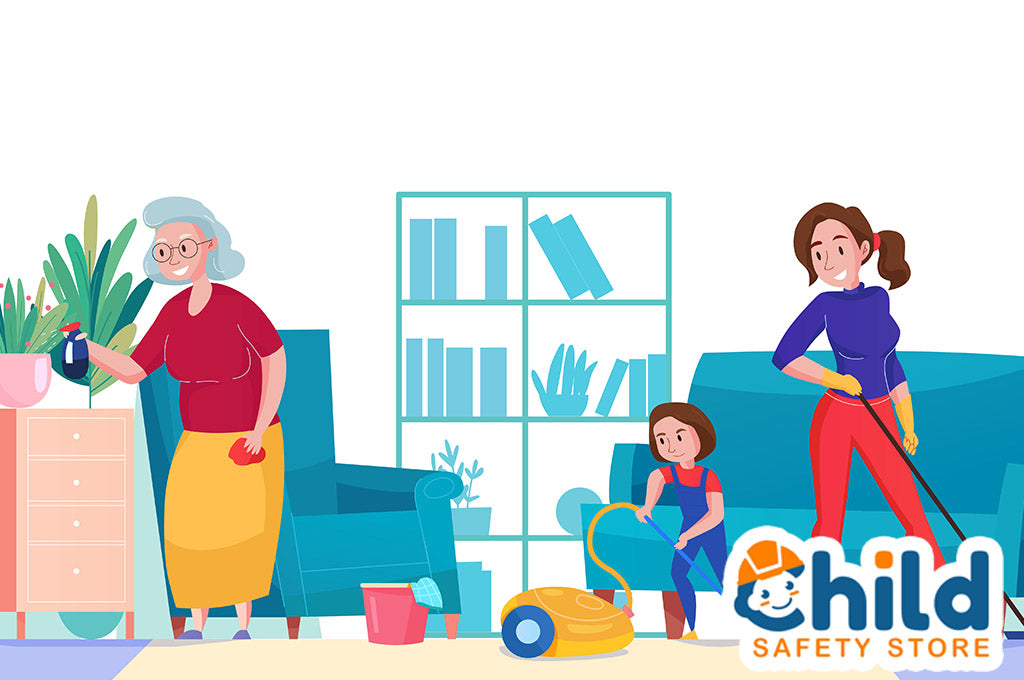
7 Tips for Spring Cleaning Safety with Kids
Spring cleaning safety isn’t a topic that’s often brought up, but it’s an important issue! We’re rapidly approaching the new season, so it’s time to break out those mops and sponges! This is a yearly tradition cherished (or at least endured) by many families. It’s a time to freshen up the home after the long winter months. To clear the cobwebs and sweep up any pesky leftover Christmas tree needles.
That said, for parents and grandparents, it’s also time for a note of caution. Above all, it's essential to make sure that this seasonal ritual doesn't pose any risks to our little helpers. Engaging kids in spring cleaning activities offers a lot of benefits, but safety must always take the driver’s seat. Let's explore some vital spring cleaning safety tips for families with young children.
-
Spring Safety Tips: Start with Communication
Before diving into spring cleaning tasks, take some time to educate your children about general cleaning safety precautions. It may seem silly, but remember that you’ll be using some fairly harsh chemicals and trying to reach high places. It’s an excellent opportunity to communicate about the potential hazards and how to avoid them while cleaning.
-
Supervision is Still a Priority
In nearly everything involving young kids, active supervision is a crucial issue. Always supervise children during spring cleaning activities, especially when using potentially dangerous equipment or chemicals. Keep a close eye on your little helpers and intervene immediately if you notice any unsafe behavior.

-
Choose Age-Appropriate Tasks
Assign cleaning tasks that are suitable for your child's age and ability. Younger children can help with simple chores like picking up toys, dusting low surfaces, or sorting items. Older kids can assist with more involved tasks such as vacuuming, wiping down surfaces, or organizing closets. By matching tasks to their skill level, you reduce the risk of accidents.
-
Safety Gear is Non-Negotiable
Just like adults, kids should wear appropriate safety gear when cleaning. This includes gloves to protect their hands from harsh chemicals, goggles to shield their eyes from dust and debris, and closed-toe shoes to prevent injuries from falling objects.

-
Keep Potentially Hazardous Cleaning Products Out of Reach
Cleaning products should always be kept securely out of children's reach and sight. An analysis of the National Poison Data System indicates that household cleaning products are among the top substances involved in pediatric poisoning incidents. Instead of taking a risk, choose to apply childproof locks on cabinets. Additionally, you can place the supplies high and out of reach. Just make sure curious little climbers won’t be able to clamber up to these hazardous chemicals.
-
Take Breaks and Hydrate
Spring cleaning can be physically demanding, even for adults. Remember to take regular breaks and encourage your children to stay hydrated. Dehydration can lead to fatigue and impaired cognitive function, increasing the risk of accidents. Keep water bottles handy and take short breaks to rest and recharge.

-
Turn It Into a Learning Experience
Spring cleaning safety is important for a lot of reasons. Doing things “the correct, safe way” offers parents and grandparents an excellent opportunity to teach children about responsibility, organization, and teamwork. Use this time to impart valuable life skills while bonding with your kids. Discuss the importance of maintaining a clean and tidy home, and involve them in decision-making processes regarding household chores.
Mopping Up: Spring Cleaning Safety
Cleaning with kids can be a rewarding experience, but safety should always be a top priority. By following these spring cleaning safety tips, you can involve your children in household chores without putting them at risk of injury or harm. Together, we can make spring cleaning a painless activity that’s fun for the whole family.
